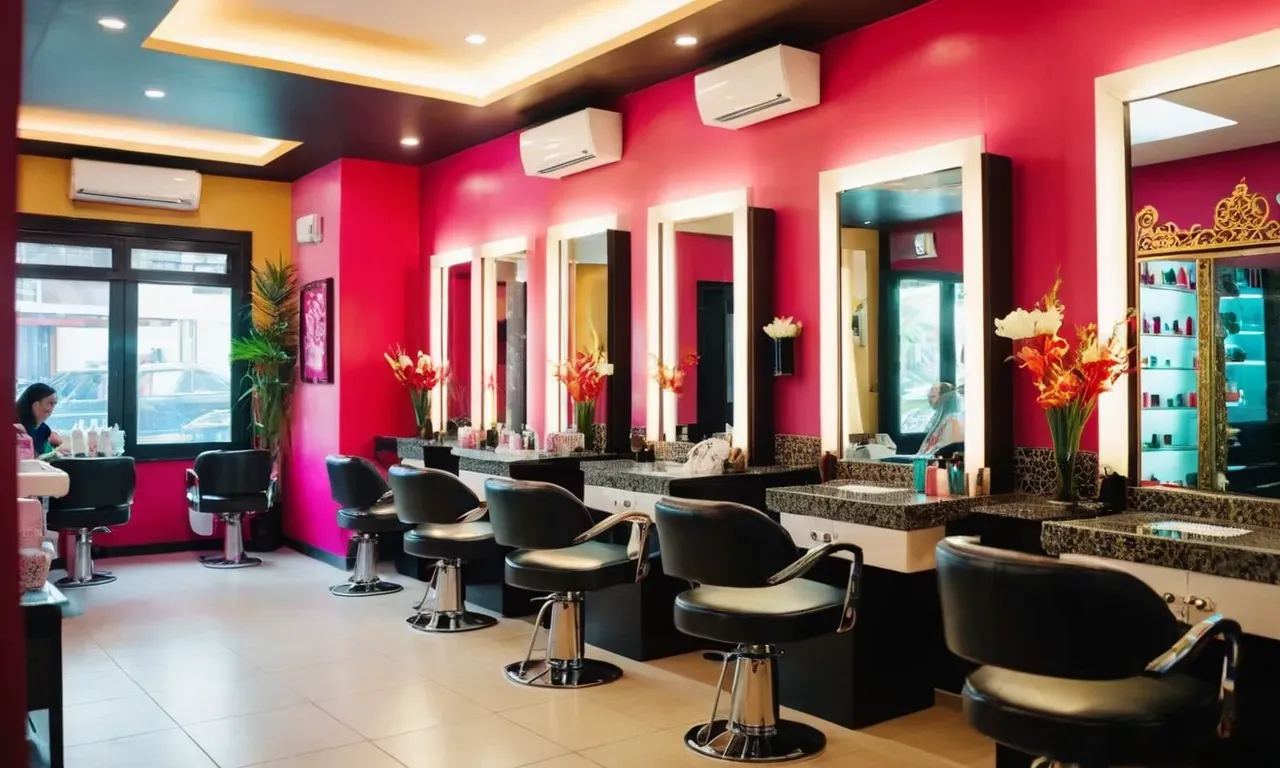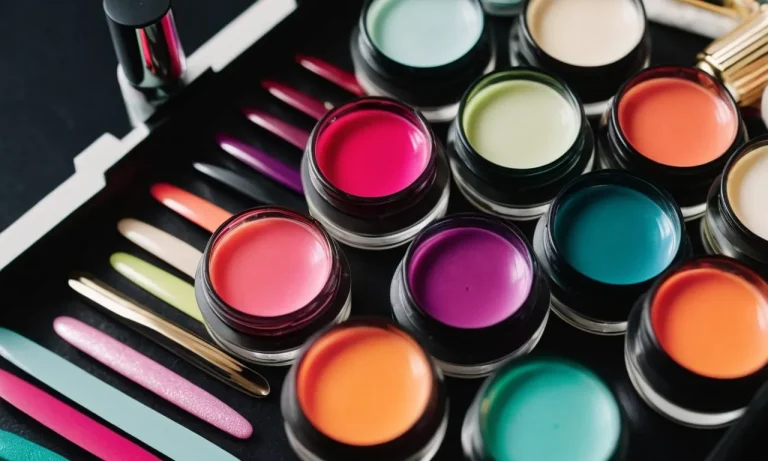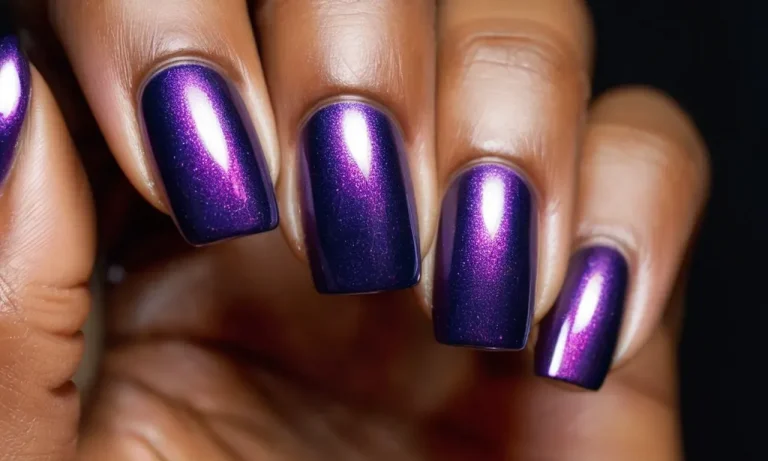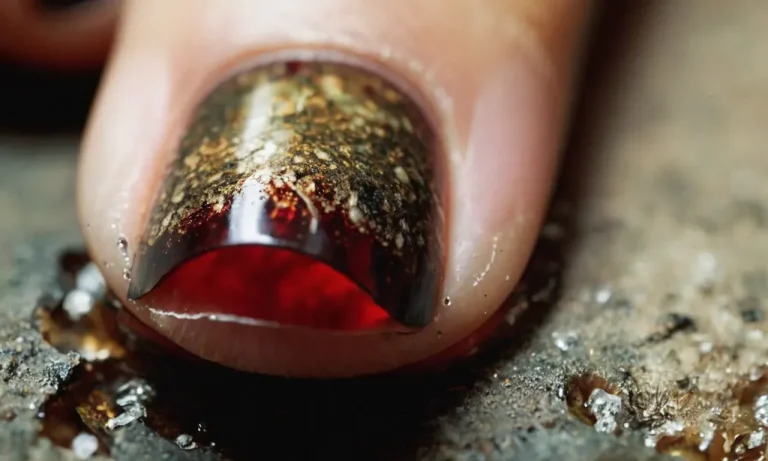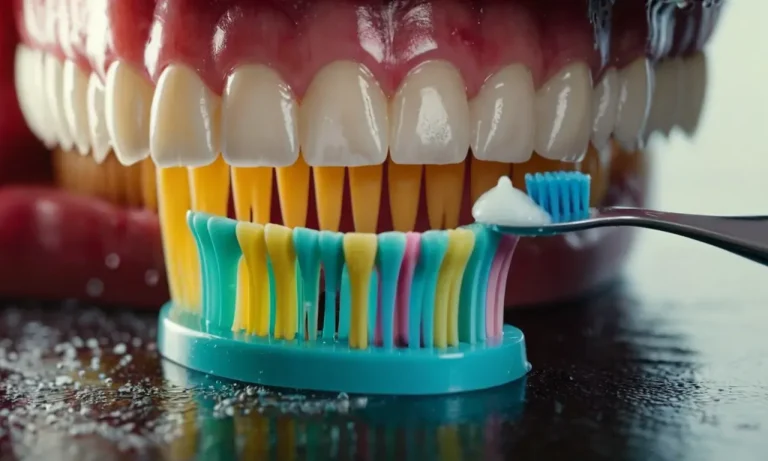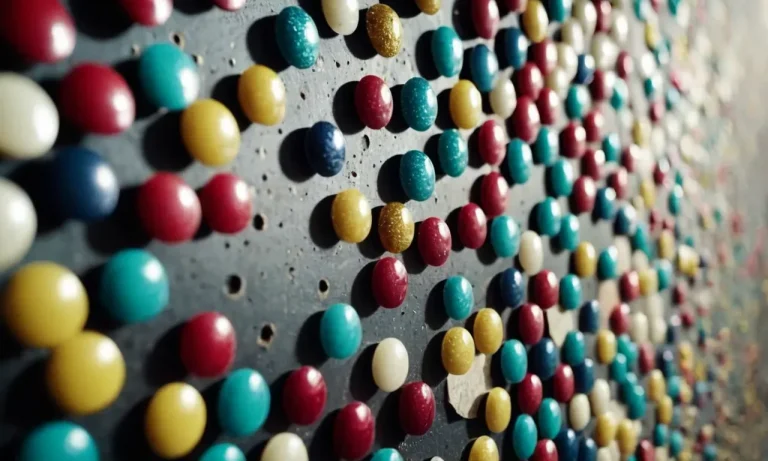Why Are So Many Nail Salons Vietnamese?
Nail salons have become ubiquitous across the United States, with over 17,000 estimated to be in business. Interestingly, a large percentage of nail technicians and salon owners in the US are Vietnamese immigrants or of Vietnamese descent.
If you’ve ever wondered why this industry seems dominated by the Vietnamese community, read on to learn the fascinating history behind this phenomenon.
If you’re short on time, here’s a quick answer: The Vietnamese nail salon industry in the US emerged post-Vietnam War as Vietnamese refugees sought to rebuild their lives and careers. Factors like strong networking, mentorship programs, affordability, and diligent work ethic allowed Vietnamese nail salons to gain dominance and thrive over the decades.
History of Vietnamese Immigration to the US
Post-Vietnam War refugee crisis
After the Vietnam War ended in 1975, hundreds of thousands of Vietnamese refugees fled the country to escape persecution and seek new opportunities. Many escaped by boat, leading to the term “Vietnamese boat people.” From 1975-1995, over 1.4 million Vietnamese refugees resettled in the US.
This first wave was mostly educated professionals, officials of the former South Vietnam government, and people who had worked with the US military. They received assistance from the US government and private sponsors to restart their lives.
Family sponsorships and secondary migration
After the initial refugee resettlements, many Vietnamese immigrants came to the US through family sponsorships. Under this program, US citizens and permanent residents could sponsor visas for their family members in Vietnam to immigrate.
This “chain migration” led to secondary migration where Vietnamese communities sprouted up around the country. For example, the population of Vietnamese in California jumped from 26,000 in 1980 to over 500,000 in 2000.
Other states like Texas, Washington, Florida, and Virginia also saw spikes as family and friends followed each other and settled in the same areas.
Settling in areas with existing immigrant communities
Many Vietnamese immigrants chose to live in established Vietnamese enclaves such as Little Saigon in Orange County, California, or several suburbs of Houston and New Orleans. These bustling communities offered support with housing, jobs, language barriers, and preserving Vietnamese culture.
They also provided a ready customer base for Vietnamese-owned businesses. According to a 2019 MPI report, over 40% of Vietnamese immigrants live in California and Texas, while the largest concentrations are in Santa Clara County, CA and Harris County, TX.
Benefits like these continue to make ethnic enclaves an attractive destination for new Vietnamese arrivals today.
Rise of Vietnamese Involvement in Nail Industry
Transferable Skills from Vietnam
Many Vietnamese immigrants brought with them skills that transferred well to nail salon services. In Vietnam, intricate and detailed handcrafts utilizing small tools are commonplace. These steady-handed talents enabled Vietnamese workers to excel at the delicate craft of nail care and design.
Affordable Training Programs in the US
Some Vietnamese immigrants took advantage of affordable nail technician programs offered at US community colleges and career schools. These short but comprehensive training courses built the necessary expertise in trends, techniques, and best practices to work professionally in nail salons at an accessible price point.
Strong Community Networks
There exist well-connected Vietnamese communities and business circles in the nail industry across the United States. These networks offer mentorship opportunities where experienced technicians train newcomers.
They also enable easier access to salon jobs, partnerships, loyal customer bases, and other resources vital for running nail businesses successfully.
Work Ethic and Commitment to Quality Service
The Vietnamese culture places a strong emphasis on hard work, discipline, attention to detail and delivering exceptional service. These values drive Vietnamese nail technicians and owners to hone their expertise continually through practice and be unwavering in their dedication to satisfying customers.
Such diligence and care translate into stellar salon experiences that keep clients coming back.
Dominance Through Ethnic Entrepreneurship
A 2022 study revealed over 50% of nail salons in California were Vietnamese-owned. Researchers attributed this high rate of ethnic entrepreneurship to the networks, resources, and mutually supportive relationships within Vietnamese communities enabling easier business establishment and cross-generational success.
Consequently, Vietnamese Americans have cemented themselves as the prominent ethnic group leading the professional nail care industry nationwide.
Advantages of the Nail Salon Business Model
Low startup costs
Opening a nail salon requires relatively little capital compared to other small businesses. The main costs are rental space, equipment like chairs and nail stations, and product inventory. Many nail techs start by renting a station at an existing salon before branching off on their own.
This allows them to build up a clientele with minimal investment. According to Forbes, it’s possible to start a nail salon with as little as $10,000.
Steady demand for services
Nail care is not just a frivolous luxury – it’s an ongoing need for many women and increasingly for men as well. Manicures and pedicures provide both aesthetic and therapeutic value. With constant growth, the nail industry raked in an estimated $8.54 billion in the U.S. in 2018 according to Nielsen data.
The numbers speak for themselves – nails are big business!
Mostly cash-based transactions
The nail industry operates largely on a cash basis. Customers usually pay for their manicures, pedicures, acrylic sets, etc. in cash right after their service. This means quick turnover and no waiting for checks to clear.
Salons can use the cash immediately to cover expenses rather than waiting for credit card payments to process. The cash flow advantages are substantial.
Flexible hours
A major perk of salon ownership is flexibility in setting hours of operation. Many salons are open 7 days a week and schedule employees in shifts to cover prime-time slots. Salons can remain open as long as needed to meet customer demand.
Employees also benefit from flexibility in choosing their schedules. This is a win-win for both owners and staff.
Potential for employees to become owners
It’s common for nail techs to transition into salon ownership after getting experience working for someone else. They develop skills and establish clientele before taking the plunge into entrepreneurship.
Some salon owners also encourage top employees to become partners or sell them part of the business. This motivation helps retain good staff. The potential for career advancement is a key factor driving so many Vietnamese to the industry.
Cultural Factors Supporting Success
Emphasis on education and achievement
Many Vietnamese immigrants place a strong emphasis on education and achievement as keys to success. Studies show that Vietnamese Americans have some of the highest educational attainment rates among Asian American groups, with over 50% holding a bachelor’s degree or higher (compared to 30% of all Americans).
This thirst for education likely stems from Confucian values that esteem scholarly pursuits. Many Vietnamese parents instill the importance of education in their children from a young age and make personal sacrifices to support their academic goals.
This drive helps explain why so many Vietnamese Americans pursue professional careers.
Language barrier necessitating entrepreneurship
Limited English proficiency is a significant barrier for many Vietnamese immigrants, especially older generations. This language hurdle makes it difficult to find well-paying corporate jobs. As a result, many Vietnamese turn to small business ownership, where language skills are less critical.
The nail salon industry has proven an accessible avenue for entrepreneurship, requiring minimal English and startup capital. For Vietnamese immigrants facing language obstacles, nail salons present a viable path to economic security and integration.
Work ethic and thriftiness
Vietnamese culture emphasizes diligence, discipline, and thrift. Many immigrants arrive with little means and aim to rapidly establish financial stability in their adopted homeland. Running a small business demands long hours and prudent money management.
Vietnamese Americans have leveraged their legendary work ethic to transform the nail industry through tireless labor. Their thriftiness enables them to reinvest earnings to grow their salons. These cultural traits—industriousness and frugality—underpin Vietnamese entrepreneurial success in the nail business.
Strong family and community ties
Most Vietnamese nail salon owners rely heavily on family members for labor and support. Spouses, children, and extended relatives often work side-by-side servicing clients. This family involvement reduces labor costs and enables businesses to thrive on thin margins.
In addition, many owners hire co-ethnic workers, forging tight-knit communities. They share information, loan money, and teach newcomers the tricks of the trade. These robust social networks, grounded in family and ethnic solidarity, provide critical resources for navigating an unfamiliar country.
Nail salon ownership as status symbol
In Vietnamese culture, business ownership confers status and respect. Given the challenges of climbing the corporate ladder, many immigrants view small business proprietorship as a mark of fulfilling the “American Dream.”
Nail salons particularly symbolize self-sufficiency because they require little training and capital. As one salon owner explained, “The Vietnamese think that when you go to America, you work for yourself as a business owner, not as a laborer.”
For manicurists, owning even a modest salon represents a badge of honor and path to prosperity.
Impact on the Beauty Industry
Increasing popularity and affordability of nail services
The emergence of Vietnamese nail technicians has played a key role in making nail services more mainstream and affordable. Since the 1980s, the number of nail salons has risen exponentially—from 20,000 in 1987 to well over 150,000 in 2021 according to the Nails Magazine.
This rise coincides with an increase of Vietnamese nail technicians entering the trade. Their willingness to work long hours at lower wages helped drive down costs, making nail care accessible to wider range of income levels. Today,the nail industry is worth over $10 billion in the U.S.
Competition from large nail salon chains
The success of small, Vietnamese-owned mom and pop nail salons inspired large scale mainstream retailers and venture capitalists to invest heavily in branded nail chains. From the early 2000s onward, chains like Happy Nails, Snappy Salons and Nail Trix gained major traction, opening hundreds of franchise locations with cookie cutter decor and product mixes.
These posed strong competition to independent salons. The Vietnamese niche has managed to survive and thrive due to established customer bases, word-of-mouth marketing and families recruiting younger generations into the business.
However, many have raised prices and diversified service offerings to keep up.
Vietnamese dominance allows for mentorship
Because Vietnamese technicians make up such a large percentage of licensed nail professionals, the entrepreneurial community is able to support young Vietnamese entering the trade through hands-on mentoring.
It’s common for established salon owners to take teens and young immigrant women under their wing, providing a salaried apprenticeship of 3-6 months before sponsoring them to obtain a technician license. This allows newcomers to learn the intricacies and high standards of Vietnamese nail culture.
After obtaining a license, many go on to open up their own salons, or partner with family members in the business. This model helps maintain high service standards across small Vietnamese salons.
Cultural stigmas and misunderstandings
Despite the immense entrepreneurial success of Vietnamese nail technicians, some cultural misunderstandings and stigmas persist. Clients unfamiliar with Vietnamese customs may feel shy interacting with technicians and mistakenly think they are unfriendly or standoffish.
Additionally, the industry is still adapting to embrace best practices around environmental health, choosing polishes and removers with less harsh chemicals. As more Vietnamese salons crop up across rural and suburban America, there is also a need for cultural sensitivity training among clients and staff to create positive interactions.
However Asian American activists help fight back against micro aggressions. The nail sector is seeing growing support after the difficult years small businesses have faced recently.
Labor exploitation concerns
There have been concerns in the media over unsafe working conditions and unfair labor practices in some Vietnamese nail salons through the years. Government agencies and activists argue that newly arrived immigrants to the trade are most vulnerable to being taken advantage of by salon owners and managers.
Issues around wages falling below legal minimums, long shifts with few breaks and poor ventilation continue to be scrutinized by the press and state officials. However, many argue that family-run nail salons with goodwill and community ties strive to treat workers like extended members of their families.
Groups like the California Healthy Nail Salon Collaborative suggest further progress is needed to modernize health standards around proper equipment and ventilation as more Vietnamese-operated salons open nationwide.
Conclusion
In summary, the prevalence of Vietnamese immigrants and Vietnamese Americans in the nail salon industry has complex origins tracing back to the Vietnam War refugee crisis. Factors like transferable skills, strong community ties, affordability of the nail salon business model, and cultural values emphasizing education and thriftiness have allowed Vietnamese nail technicians and owners to find remarkable success in the industry over recent decades.
However, concerns over fair labor practices, cultural stereotyping, and competition from large chains reveal ongoing challenges. Understanding this unique ethnic niche provides fascinating insight into the Vietnamese American experience and influence on the modern beauty industry.

